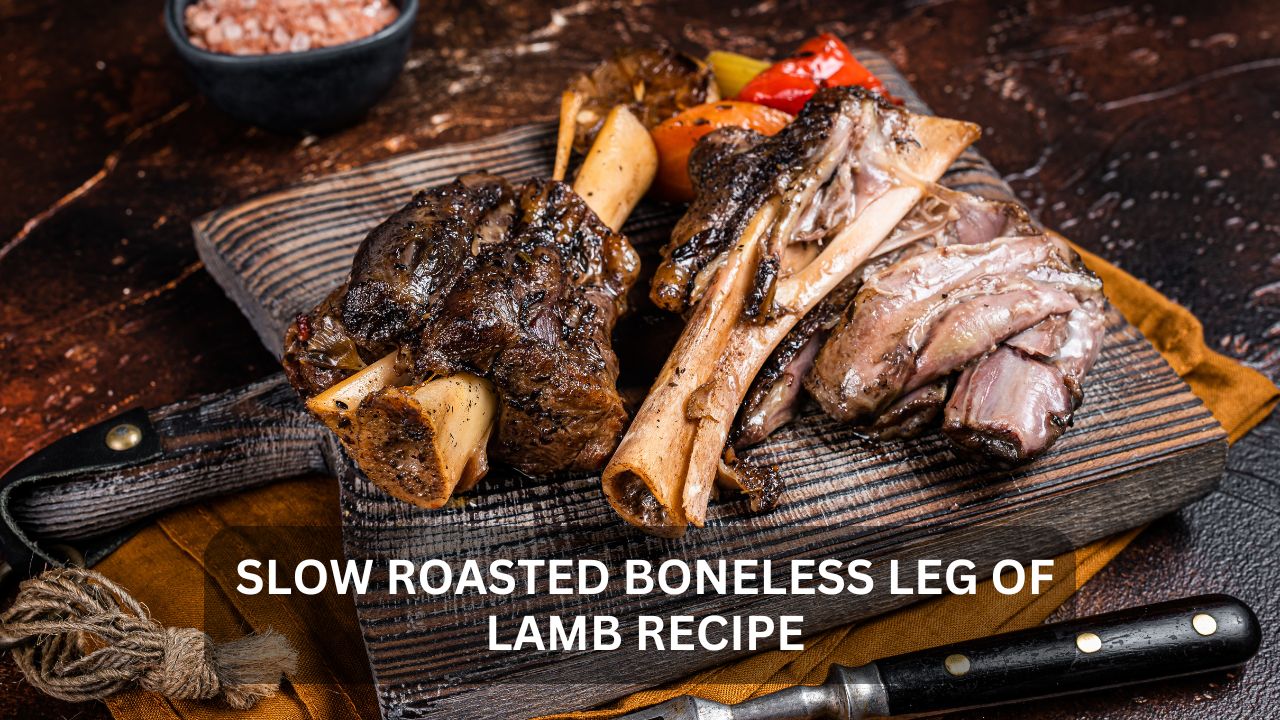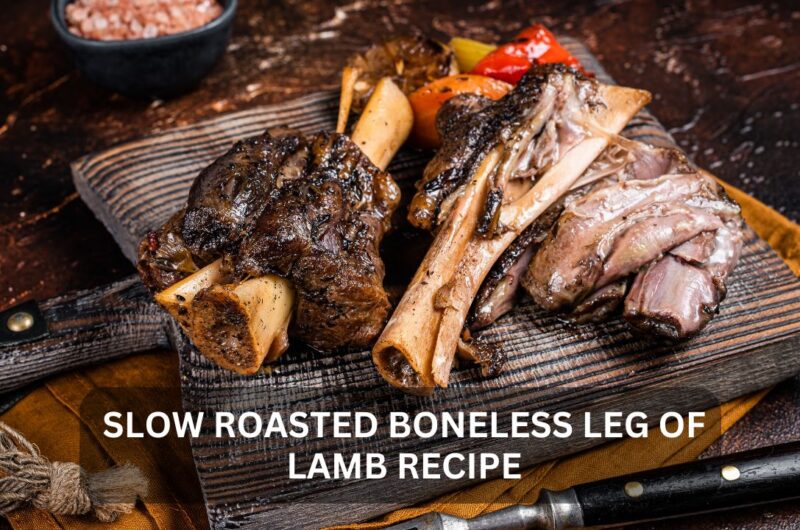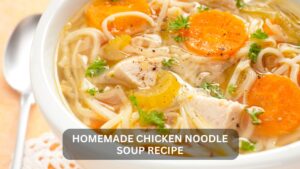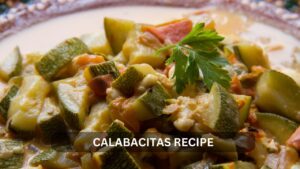Among the canvases of meats that grace our dining tables, a slow roasted boneless leg of lamb stands as both a timeless classic and a surprising centerpiece that never ceases to delight. Rich, succulent, and imbued with a flavor that captures the essence of seasons and tradition, this dish exudes a certain grandeur, making it a star on any festive table or as a comforting family Sunday roast. In an ode to the tender calls of spring and the warmth of a community gathering, this post serves as your culinary compass to prepare a show-stopping slow-roasted boneless leg of lamb.
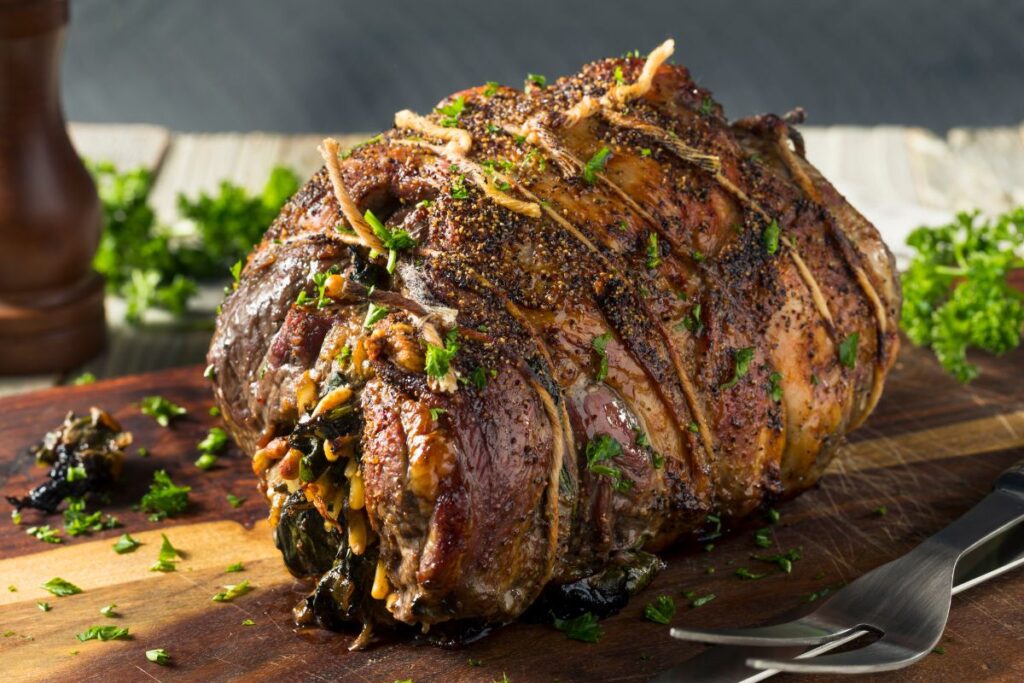
Unwrapping the Story of Lamb Cuisine
The presence of lamb in gastronomic tales stretches across centuries and continents. From the tender spring lambs of the Mediterranean to the hearty dishes that warm the tables of shepherding cultures, lamb is a staple distinguished in its versatility. It’s been a hallmark of celebration and feasting, often associated with religious and cultural observances, thanks to its symbolism of sacrifice, sustenance, and renewal.
Perhaps it’s the heritage recipes passed through generations or the modern twists that marry global flavors with this traditional meat that adds layers to its culinary significance. The slow-roasted boneless leg of lamb, in particular, symbolizes this marriage — a tribute to bygone days, with a touch of contemporary flair in its preparation.
Ingredients for Slow-Roasted Boneless Leg of Lamb
To venture into the rich, flavorful world of slow-roasted boneless leg of lamb, you’ll need a carefully selected list of ingredients that will elevate the dish to its majestic potential. Here’s what you’ll need:
A Timeless Delight: Slow Roasted Boneless Leg of Lamb
Course: DinnerCuisine: hindquarterDifficulty: Easy10
servings15
minutes1
minute258
kcalAmong the canvases of meats that grace our dining tables, a slow roasted boneless leg of lamb stands as both a timeless classic and a surprising centerpiece that never ceases to delight. Rich, succulent, and imbued with a flavor that captures the essence of seasons and tradition, this dish exudes a certain grandeur, making it a star on any festive table or as a comforting family Sunday roast. In an ode to the tender calls of spring and the warmth of a community gathering, this post serves as your culinary compass to prepare a show-stopping slow-roasted boneless leg of lamb.
Ingredients
1 boneless leg of lamb (about 4-5 pounds), netted or tied
2 tablespoons olive oil
4 cloves garlic, minced
2 tablespoons fresh rosemary, chopped
1 tablespoon fresh thyme, chopped
Zest of 1 lemon
Salt and freshly ground black pepper to taste
1 cup red wine (for the roasting pan)
1 cup chicken or vegetable broth (for the roasting pan)
Optional for garnish:
Fresh herbs (extra rosemary and thyme)
Lemon slices
Directions
- Preparation Time: Begin by preheating your oven to 325°F (165°C), ensuring it reaches the right temperature for a slow, even roast.
- Marinating the Lamb: In a small bowl, mix the olive oil, minced garlic, chopped rosemary, chopped thyme, and lemon zest. Lay the boneless leg of lamb flat on a clean surface and season generously with salt and freshly ground black pepper. Rub the olive oil and herb mixture all over the lamb, ensuring every part is well-coated. If time allows, letting the lamb marinate for a few hours in the refrigerator will enhance its flavor.
- Tying the Lamb: If your lamb still needs to be netted or tied, roll it into a tight cylinder and tie it with kitchen twine. This helps the lamb cook evenly and maintain its shape, making for a more presentable dish.
- Roasting the Lamb: Place the lamb in a roasting pan. Pour the red wine and chicken or vegetable broth into the base of the pan. This will help keep the lamb moist throughout the cooking process and create a flavorful base for a gravy or sauce.
- Cooking Time: Insert your meat thermometer into the thickest part of the lamb. Roast the lamb in the preheated oven for about 2 to 2.5 hours, or until the meat thermometer reads 135°F (57°C) for medium-rare. Adjust the cooking time if you prefer your lamb to be more or less done.
- Resting the Lamb: Once the lamb is cooked to your liking, remove it from the oven and cover it loosely with foil. Let it rest for at least 15 minutes before carving. This resting period allows the juices to redistribute throughout the lamb, ensuring it’s moist and flavorful.
- Carving and Serving: After the lamb has rested, remove the twine and transfer the lamb to a cutting board. Slice the lamb against the grain into pieces of your desired thickness. Arrange the slices on a serving platter, garnishing with fresh herbs and lemon slices for an added touch of elegance.
- Enjoy: Serve your slow roasted boneless leg of lamb with your choice of sides. Traditional accompaniments include roasted potatoes, steamed vegetables, or a simple green salad. Remember to drizzle some of the pan juices over the lamb for an extra burst of flavor.
Recipe Video
For more delicious homemade cook recipes, check out here-
- Longhorn French Onion Soup recipe / Jimboy’s Tacos / Gigi Hadid’s Pasta
- Doritos Chicken Casserole /Ground Beef/ Biscuits and Gravy Without Sausage
- Cowboy Soup / Sopa de Salchichon Recipe / Chicken Caesar Salad Wrap / Oyster Dressing
- Grilled Cheese Nacho Fries / Barefoot Contessa Turkey Burger / Perry’s Steakhouse Pork Chop
- Cheeseburger Soup / Captain D’s Tartar Sauce/ Boston Butt / Brenda Gantt’s Cabbage Casserole
- Carne Deshebrada / Blue Runner Red Beans and Rice / Crispy Fried Chicken Sandwich / Gluten Free Meatballs/ Crafting Your Bourbon Maple Syrup / Cinna Bun Cake / Keto Crockpot
- Herring and Pumpkin Pot Pie / Pineapple Cake / Corn Nuggets / Milanesa Steak
- Bisquick Dumplings / Buttermilk Cornbread/ Calabacitas Recipe
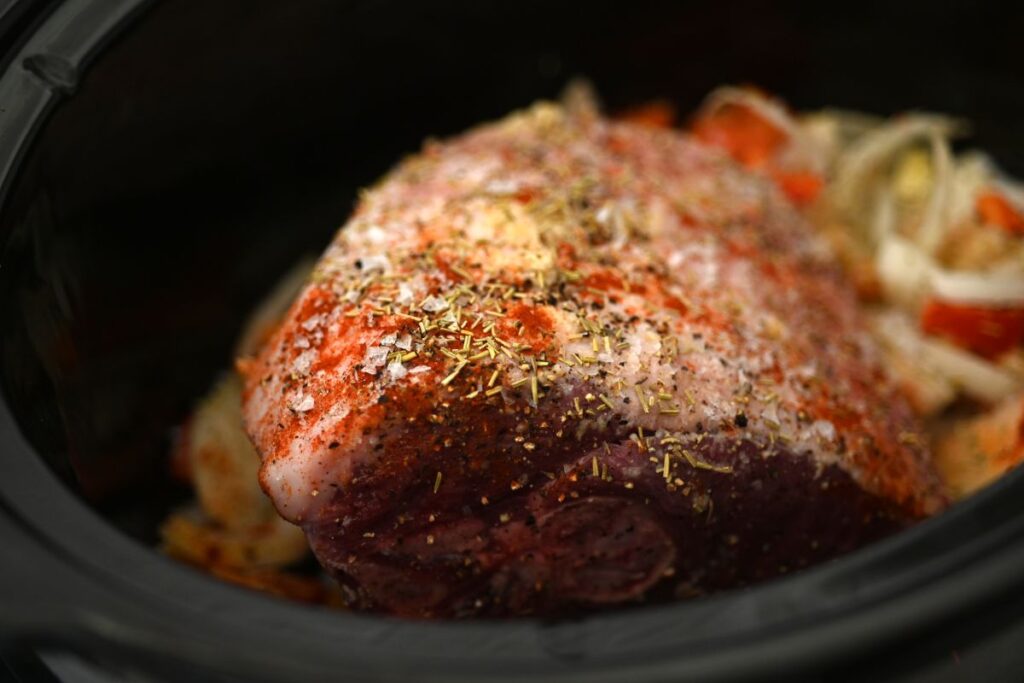
The Recipe: Slow-roasted boneless Leg of Lamb
Choosing the Perfect Cut
Begin by carefully selecting a well-trimmed, boneless leg of lamb. Opting for a boneless cut not only simplifies the carving process but also results in a more uniform roast that cooks evenly throughout. Look for a piece with a generous marbling of fat, as this not only enhances the flavor but also ensures the meat remains moist and succulent during cooking. Before marinating, it’s advisable to pat the lamb dry and score the fat in a crosshatch pattern to facilitate better absorption of the flavors and to promote even cooking, resulting in a tender and flavorful dish.
Marinating for Succulence
The magic of slow-roasting starts with the lamb’s time marinating in a delightful blend of high-quality olive oil, freshly minced garlic, fragrant rosemary, and aromatic thyme. Picture this: a touch of lemon zest for a burst of freshness and then a drizzle of rich balsamic vinegar to create a luscious caramelized glaze that will tantalize your taste buds. It’s essential to ensure the lamb is generously coated with all these flavorful ingredients, allowing it to marinate in the refrigerator for at least a few hours, or better yet, overnight, to let the flavors meld and intensify, promising a truly unforgettable culinary experience.
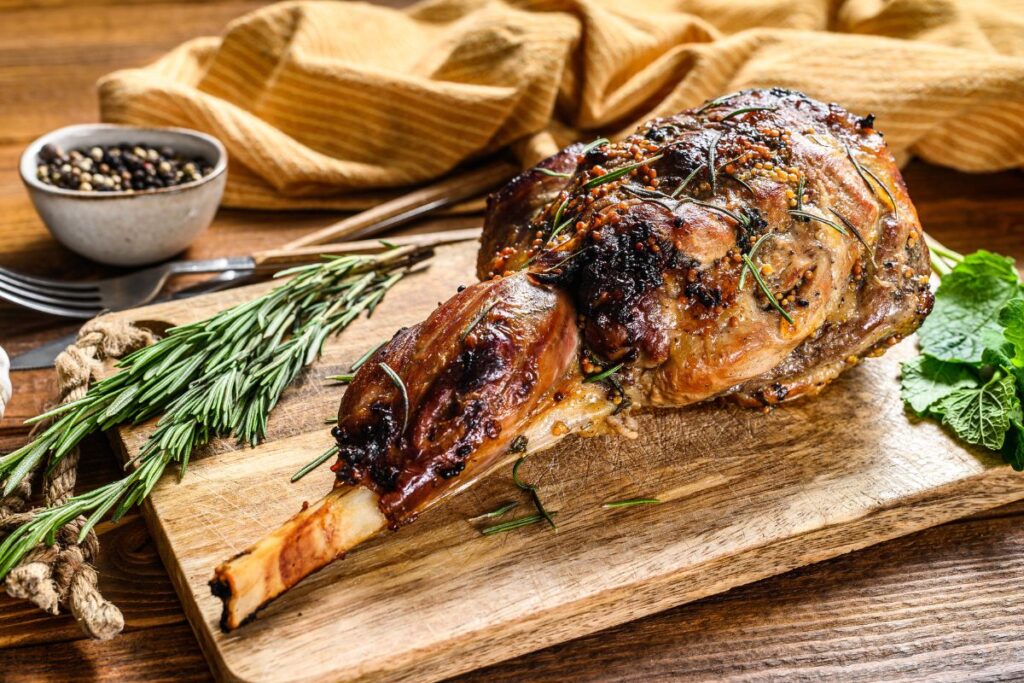
Seasoning to Perfection
The seasoning ritual is truly an art form — it delicately woos the lamb with intricate layers of flavor that ultimately crescendo into a beautifully golden crust. To commence this culinary symphony, start with a liberal sprinkling of kosher salt and freshly ground black pepper, setting the stage for what’s to come. Next, orchestrate a harmonious blend of spices tailored to your taste buds, contemplating the inclusion of paprika for a subtle warmth, cumin for a grounded earthiness, and perhaps a mere hint of cinnamon for a touch of sweetness. The symphony of flavors should not only resonate harmoniously with your palate but also elevate the dining experience to suit the special occasion at hand.
The Slow Roast
The centerpiece of this culinary affair is the slow, gentle roast that ensures a succulent and flavorful outcome. To initiate the process, start with a hot oven to sear the lamb, creating a caramelized crust that locks in the juices. Gradually reduce the temperature to a steady 325 degrees Fahrenheit, allowing the meat to tenderize and develop rich flavors. As the lamb roasts, the aromas will fill your kitchen, promising a delectable meal ahead. Pay close attention to the lamb’s internal temperature, aiming for 135-140°F for the perfect balance of tenderness and juiciness. Once achieved, remove the lamb from the oven and let it rest, allowing the savory juices to redistribute and enhance the overall taste.
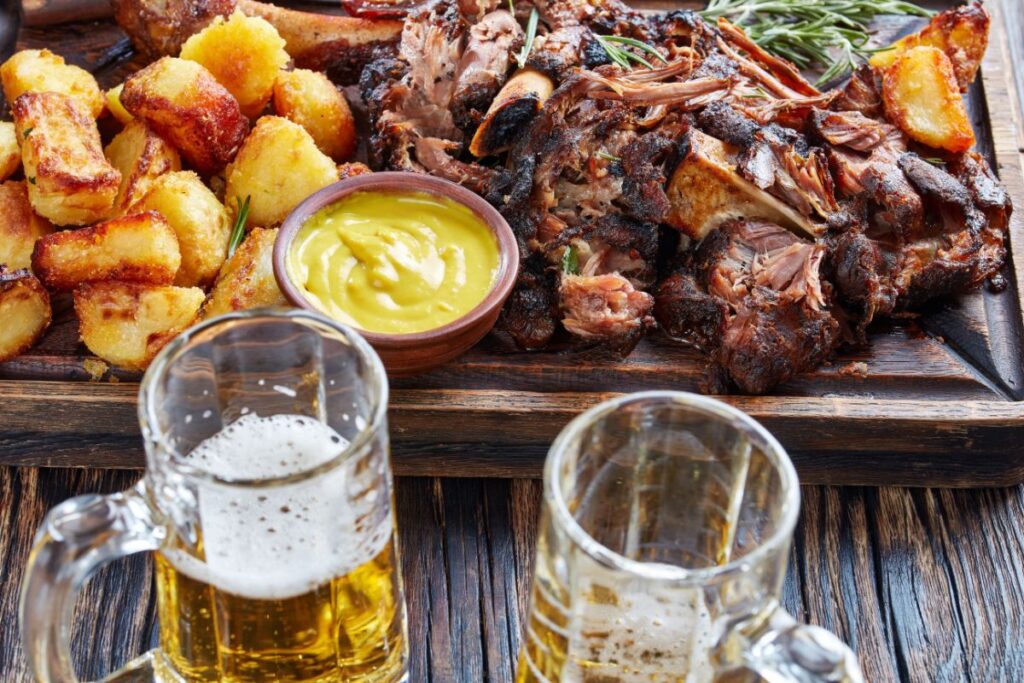
Companions in Culinary Harmony
Enhance the dining experience with sides that perfectly complement the lamb’s robust profile. Velvety mashed potatoes, whipped with a hint of garlic and cream, provide a comforting contrast to the savory lamb. A bright and citrusy couscous salad featuring fresh herbs like parsley and mint adds a zesty kick to the palate. The roasted root vegetables of the season drizzled with a balsamic glaze for a touch of sweetness, serve as worthy cups for the lamb’s succulence, offering a mix of textures and flavors that tantalize the taste buds. When selecting wines to pair with this exquisite dish, consider options that echo the richness of the meat — a bold Cabernet Sauvignon with notes of black currant and oak, or a fragrant Pinot Noir with hints of cherry and spice can be the perfect accompaniment, elevating the meal to a symphony of flavors that dance harmoniously on your tongue.
Nutritional Benefits of Savor
This delectable dish not only delights the senses but also nourishes the body with its rich flavors and wholesome ingredients. Lamb, known for its juiciness, is a premium source of high-quality proteins and an array of essential vitamins and minerals vital for overall health. With nutrients like zinc, vitamin B12, riboflavin, and selenium, each serving of this slow roasted boneless leg of lamb contributes to a harmonious and well-rounded diet. Enjoy this culinary masterpiece not just as a meal but as a culinary experience that satisfies both the palate and the body’s nutritional needs.
The Test of Time and Taste
There’s a beauty in recipes that bridge the past with the present. slow roasted boneless leg of lamb is one such affirmation of time and taste. Through the years, countless home cooks have woven stories around this dish — of trial and triumph, of love shared through labor in the kitchen, and of moments that stand still as the scent of roasting lamb wafts through the home. With each successful roast, a new chapter is added to this shared tale of good food and great company.
In a world that often revs at a breakneck pace, there’s an inexplicable charm in dishes that beckons us to slow down, savor each bite, and rejoice in the act of cooking itself. The slow roasted boneless leg of lamb is not just a recipe; it’s a promise. A promise that in every slice, there’s a reminder to appreciate the simple joys, celebrate tradition, and relish the moments that make up our lives.
May your kitchen be filled with the symphony of sizzling lamb, the alchemy of spices, and the glow of friendship that a shared meal brings. Share your tableau of lamb with us — the preparation, the feast, and the stories that it inspires. Together, we can keep the embers of culinary traditions burning, one savory roast at a time.
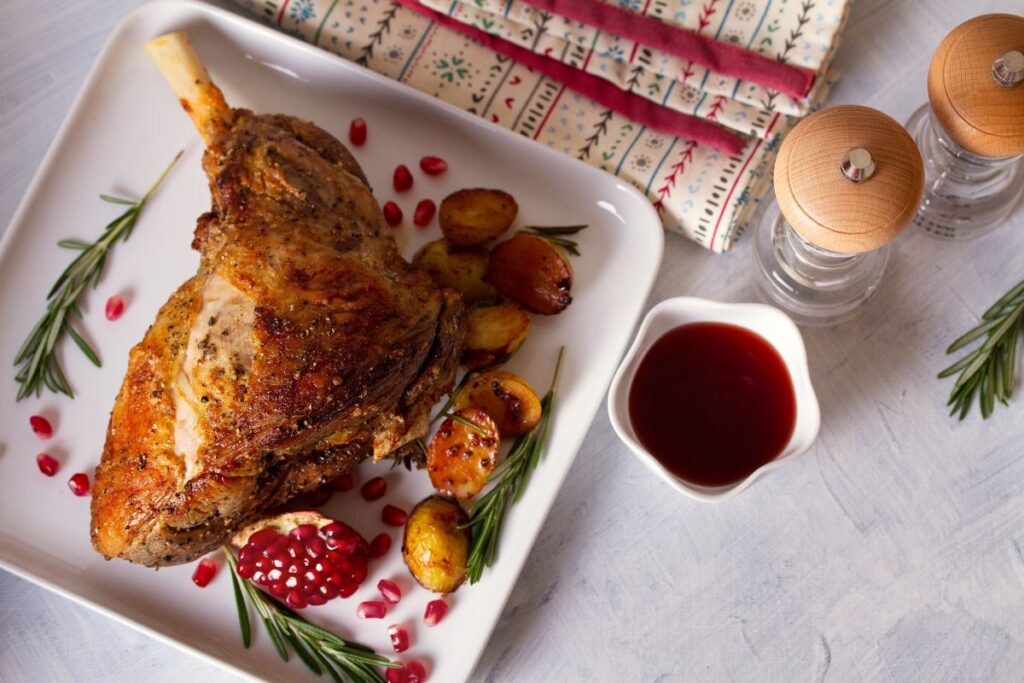
Additional Tips and Variations
- Monitoring Cooking Temperature: Using a meat thermometer ensures precision in reaching the desired doneness. Remember, the internal temperature will rise slightly during resting.
- Herb and Spice Alternatives: While rosemary and thyme are classic, experiment with oregano, marjoram, or mint for a twist. Spice enthusiasts might appreciate a hint of smoked paprika or chili.
- Marinade Mix-ups: For a different flavor profile, swap balsamic vinegar with red wine vinegar or add a splash of soy sauce for umami richness.
- Making Use of Leftovers: Transform any leftovers into delicious lamb sandwiches, salads, or even a shepherd’s pie, making sure every piece of your masterpiece is utilized.
- Alternate Cooking Methods: Slow cooker enthusiasts can adapt this recipe for a set-it-and-forget-it meal, adjusting liquid quantities and cooking times accordingly.
- Serving Suggestions: Venture beyond traditional sides with quinoa salads, grilled vegetables, or a refreshing tabbouleh to complement the lamb’s richness.
- Wine Pairing: While the document suggests Cabernet Sauvignon and Pinot Noir, exploring with a Shiraz or a Merlot can also yield delightful pairings. For a non-alcoholic option, a fruity and slightly bubbly grape juice can serve as an excellent substitute.
- Accompaniments: Aside from mashed potatoes or couscous salad, roasted sweet potatoes, steamed green beans, or even buttery Brussels sprouts can add dimension to the meal. Remember the mint jelly for those who enjoy a touch of sweetness with their savory lamb.
- Flavorful Finish: Brushing the lamb with a simple honey glaze in the final minutes of roasting can introduce an irresistible depth of flavor and caramelization. A sprinkle of pomegranate seeds or fresh herbs on top can also be visually appealing.
- Doneness Preference: While this recipe suggests medium-rare, you can adjust the cooking time for a more well-done lamb. For medium, aim for an internal temperature of 145-150°F, and for well-done, 160°F.
- Sharing Memories: As you indulge in this delicious dish with your loved ones, take a moment to share stories and memories around food. It’s not just about what’s on the plate but also about the conversations and connections that happen around it. Keep building new memories with this recipe and add them to your culinary legacy.
- Adapting for Different Occasions: While this recipe is perfect for a special occasion or holiday feast, don’t shy away from making it on a regular weeknight. The cooking process may take some time, but most of it is hands-off, making it a stress-free and satisfying dinner option. You can also adjust the portion size by using a smaller or larger cut of lamb to fit your needs.
- Creating a Complete Meal: Add some bread or rolls and a colorful salad to make this slow roasted boneless leg of lamb the centerpiece of a complete meal. For an appetizer, serve some olives, hummus, and pita bread for a Mediterranean-inspired experience. Remember to save room for dessert! A fruity tart or creamy cheesecake are both excellent options that pair well with the flavors of lamb.
- Cooking Time Variations: Depending on the size and thickness of your cut of lamb, cooking times may vary. Adjust accordingly, keeping in mind the desired doneness and checking for the internal temperature. As a general rule of thumb, plan for 20-25 minutes per pound of lamb at 350°F, but always use a meat thermometer to ensure accuracy.
As you experiment with different variations and techniques, remember that the heart of this dish lies in its simplicity and timeless appeal. It’s not just about the ingredients and steps but also about the love and memories that are baked into every bite. So go forth, gather your friends and family, and create a story around this slow roasted boneless leg of lamb that you can cherish for years to come.
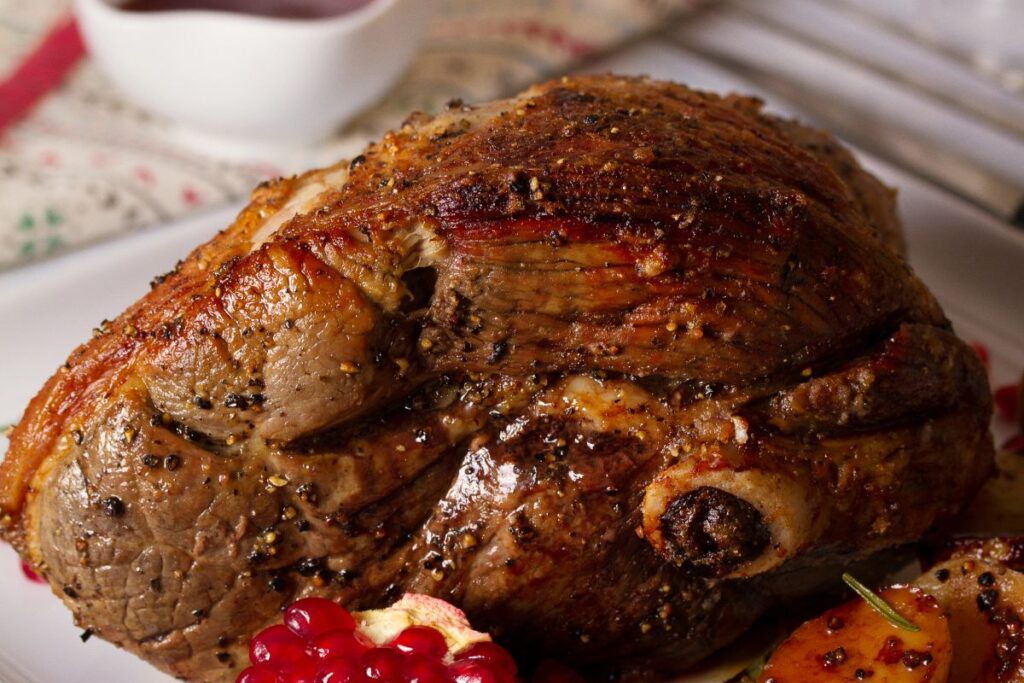
Conclusion
In the realm of culinary arts, the slow roasted boneless leg of lamb stands as a testament to the beauty of slow cooking, a method that imbues the meat with unparalleled tenderness and flavor. This dish is more than just a meal; it’s a celebration of tradition, an art form that brings together the finest ingredients, and a labor of love that transforms a simple cut of meat into a masterpiece. Whether for a festive gathering or an intimate dinner, the slow-roasted leg of lamb promises to be a heartwarming centerpiece that not only feeds the body but also nourishes the soul. It encourages us to gather around the table, share stories and laughter, and create memories that linger long after the last bite.
Reference
Frequently Asked Questions about Slow Roasted Boneless Leg of Lamb
Q: How long should I marinate the lamb for optimal flavor?
A: For the best results, marinate the lamb for at least a few hours, though ideally overnight. This gives the flavors time to penetrate the meat, enhancing its taste and tenderness deeply.
Q: At what temperature should the lamb be cooked?
A: Start with a hot oven (around 425°F) to sear the exterior, then reduce the temperature to 325°F for the remainder of the cooking time. This ensures a tender, juicy roast with a beautifully browned exterior.
Q: How do I know when the lamb is cooked to perfection?
A: The lamb’s internal temperature is the most reliable indicator. For medium-rare, aim for an internal temperature of 135-140°F. Remember to allow the meat to rest for at least 15 minutes before slicing to ensure juices are redistributed.
Q: Can I customize the marinade or seasoning for the lamb?
A: Absolutely! The basic marinade and seasoning can be adapted to suit your taste preferences or to complement the side dishes you plan to serve. Feel free to experiment with different herbs, spices, and acidic components like vinegar or citrus.
Q: What are some side dishes that pair well with slow-roasted lamb?
A: Velvety mashed potatoes, a bright, citrusy couscous salad, or roasted seasonal vegetables complement the lamb’s rich flavor. For wines, a bold Cabernet Sauvignon or a fragrant Pinot Noir enhances the dining experience.
Q: How can I ensure that my lamb is moist and not dry?
A: Keeping the temperature-controlled and not overcooking the lamb is key to maintaining its moisture. Using a meat thermometer to check doneness and allowing the meat to rest before serving helps lock in the juices.
Q: What nutritional benefits does lamb offer?
A: Lamb is an excellent source of high-quality protein, essential vitamins (such as B12 and riboflavin), minerals (including zinc and selenium), and it provides a rich source of omega-3 fatty acids. It’s a nutritious addition to a balanced diet.

